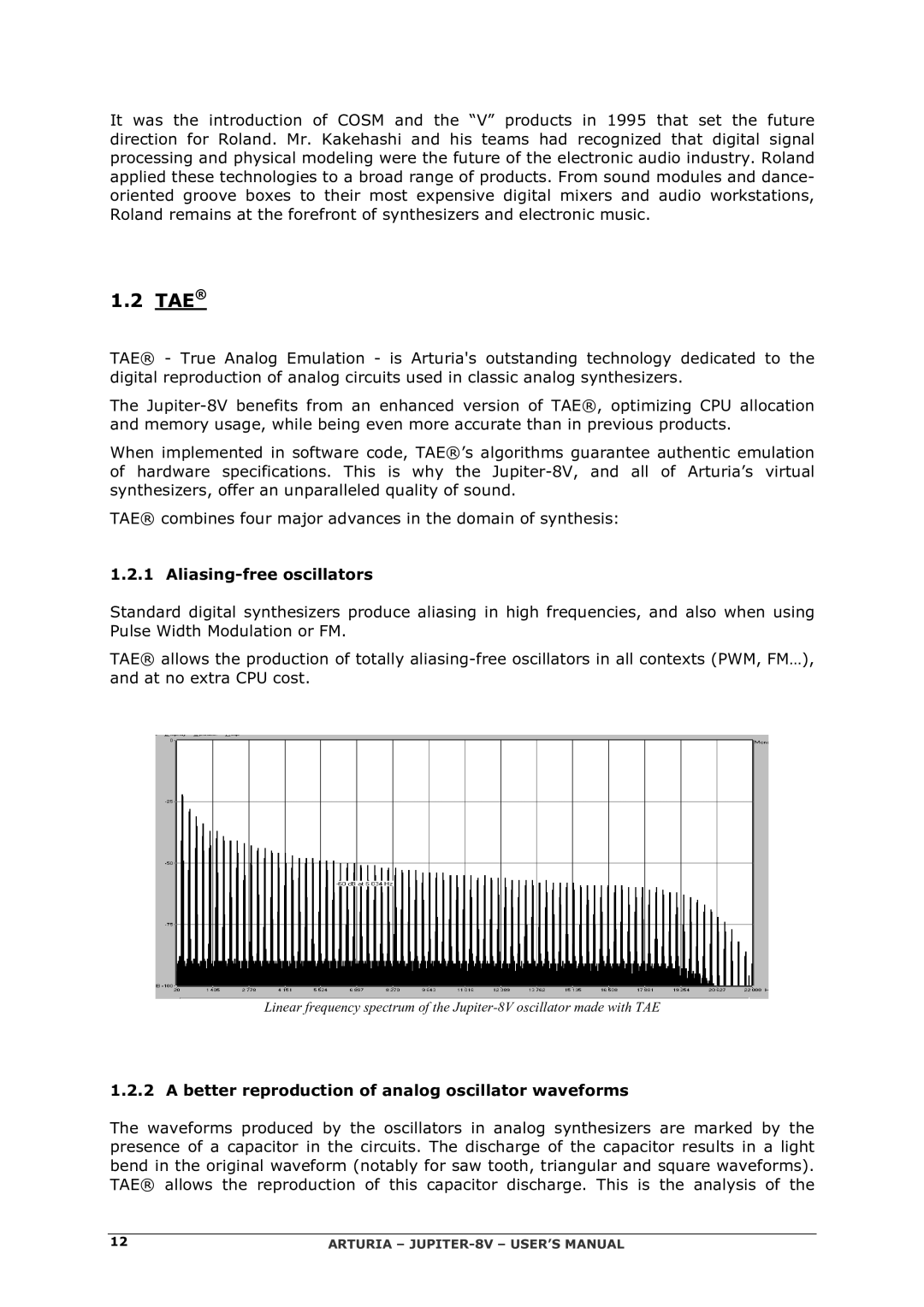
It was the introduction of COSM and the “V” products in 1995 that set the future direction for Roland. Mr. Kakehashi and his teams had recognized that digital signal processing and physical modeling were the future of the electronic audio industry. Roland applied these technologies to a broad range of products. From sound modules and dance- oriented groove boxes to their most expensive digital mixers and audio workstations, Roland remains at the forefront of synthesizers and electronic music.
1.2TAE®
TAE® - True Analog Emulation - is Arturia's outstanding technology dedicated to the digital reproduction of analog circuits used in classic analog synthesizers.
The
When implemented in software code, TAE®’s algorithms guarantee authentic emulation of hardware specifications. This is why the
TAE® combines four major advances in the domain of synthesis:
1.2.1 Aliasing-free oscillators
Standard digital synthesizers produce aliasing in high frequencies, and also when using Pulse Width Modulation or FM.
TAE® allows the production of totally
Linear frequency spectrum of the
1.2.2 A better reproduction of analog oscillator waveforms
The waveforms produced by the oscillators in analog synthesizers are marked by the presence of a capacitor in the circuits. The discharge of the capacitor results in a light bend in the original waveform (notably for saw tooth, triangular and square waveforms). TAE® allows the reproduction of this capacitor discharge. This is the analysis of the
12 | ARTURIA – |
